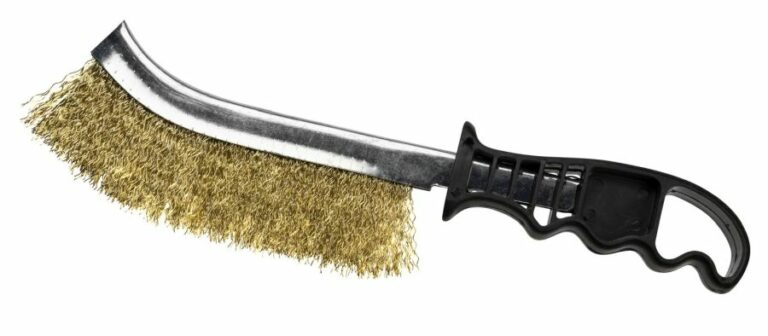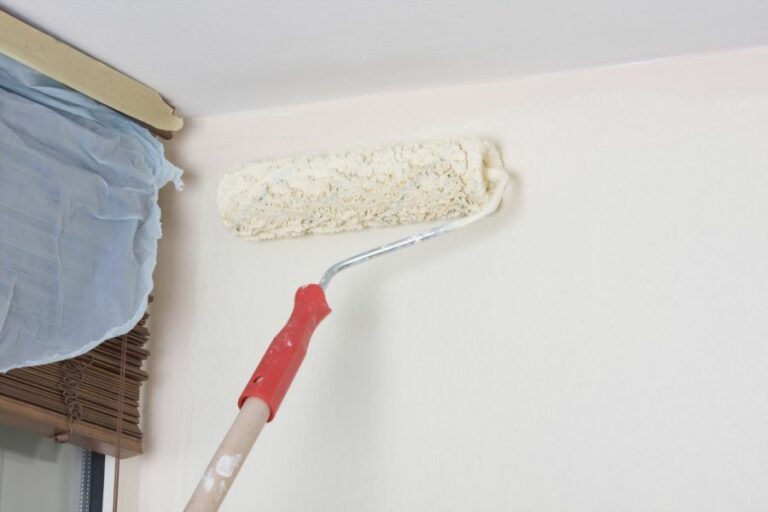Chemical Cleaning Methods For Exterior And Interior Surfaces
Are you looking for chemical cleaning methods that effectively remove dirt, stains, and grime from both interior and exterior surfaces? Well, look no further because we have got you covered. We understand the importance of maintaining cleanliness and hygiene in both residential and commercial spaces, and we are here to share with you our expert knowledge of the best chemical cleaning methods available today.
Chemical cleaning methods for exterior and interior surfaces:
Chemical cleaning methods for indoor and outdoor surfaces include pressure washing with detergents, sodium hypochlorite (bleach), steam cleaning, and vinegar and baking soda. These techniques effectively remove dirt, stains, mold, and mildew, maintaining the cleanliness and appearance of various surfaces. Proper safety precautions and following instructions are vital for successful cleaning.

Discover the world of chemical cleaning methods for exterior and interior surfaces. Explore various techniques and products to achieve optimal cleanliness and maintain the beauty of your space.
Unearth professional tips and tricks to make cleaning tasks effortless. Read on to unveil the secrets of pristine surfaces.
Contents
- 1 Techniques for Chemical Cleaning of Indoor & Outdoor Surfaces
- 2 Explore the Four Techniques for Chemical Cleaning
- 3 Understanding Surface Cleaning through Chemical Methods
- 4 Top 5 Chemicals for Effective Surface Cleaning
- 5 Discover the Nine Key Cleaning Chemical Categories
Techniques for Chemical Cleaning of Indoor & Outdoor Surfaces
• Introduction to Chemical Cleaning Methods
Chemical cleaning methods are a reliable way to clean various surfaces, both the interior and exterior of a building. They offer a practical solution for removing dirt, stains, mold, and mildew while also providing an efficient solution for maintaining the long-term cleanliness and appearance of your property.
• Pressure Washing with Detergents
Pressure washing is an effective method for cleaning exterior surfaces like decks, fences, siding, and concrete driveways. Using a detergent with the pressure washer helps to break down dirt, algae, and mold, making it easier to rinse away.
When pressure washing, it’s essential to select a suitable detergent for the material you want to clean. For example, for wood surfaces, use a wood cleaner designed specifically for pressure washers. For concrete and masonry, use a cleaner specifically designed for these surfaces.
Remember always to follow the detergent’s instructions and operate the pressure washer according to the user manual.
• Sodium Hypochlorite (Bleach) Cleaning
Sodium hypochlorite, commonly known as bleach, is a powerful cleaning agent for various surfaces. It can effectively remove stains, mold, and mildew, especially from surfaces like concrete, vinyl siding, and tile. To prepare a bleach solution, mix 1 cup of bleach with a gallon of water.
Use a pump sprayer to apply the bleach mixture on the surface, and let it sit for 10-15 minutes. Avoid letting the solution dry on the surface. Rinse thoroughly with water.
It’s important to note that bleach can harm plants, so protect any nearby vegetation by covering them with a plastic sheet or wetting them with water before applying the bleach solution. Always wear gloves and protective eyewear when working with bleach, and avoid inhalation.
• Steam Cleaning for Interior Surfaces
Steam cleaning is a chemical-free cleaning method that uses heated water vapor to remove dirt, grease, mold, and mildew from many surfaces like carpets, upholstery, tile, and grout. The high temperature of the steam helps break down and lift dirt while also killing bacteria, germs, and mites.
Using a steam cleaner is simple just fill the machine’s tank with water and wait for it to reach boiling point. Attach an appropriate accessory, like a brush or nozzle, and work on the surface you want to clean using slow, even strokes.
• Vinegar and Baking Soda for Non-Toxic Cleaning
Vinegar and baking soda are natural, non-toxic options for cleaning surfaces. They can be used separately or combined to create a powerful cleaning agent.
To create a cleaner, mix equal parts water and white vinegar in a spray bottle. Apply it on the surface, let it sit for a few minutes, then scrub with a brush or cloth. Finally, rinse with water.
For stubborn stains or mold, create a paste mixture using baking soda and a small amount of water. Apply this paste directly to the stain or affected area, and let it sit for a few minutes before scrubbing and rinsing clean.
• Safety Precautions for Chemical Cleaning
When using any chemical cleaning method, it’s essential to take the necessary precautions to ensure the safety of yourself and your surroundings. Always wear protective gear such as gloves, goggles, and masks when needed, and ensure proper ventilation in the area you are cleaning.
Be cautious when using chemicals around children and pets; always store the products securely and out of reach when not in use.
When working with chemical cleaners, it’s essential to follow the instructions on the packaging and never mix different chemicals. Incompatible chemicals can become hazardous or neutralize each other’s cleaning properties when combined.
For example, never mix bleach with ammonia or vinegar, as this produces toxic fumes.
• Conclusion
Chemical cleaning methods provide a valuable solution for maintaining the cleanliness and appearance of exterior and interior surfaces. While each method has its advantages and disadvantages, selecting the appropriate technique for the surface you intend to clean is crucial for achieving the best results.
By using these chemical cleaning methods and following the necessary safety precautions, you can effectively remove dirt, stains, mold, and mildew and maintain a clean and healthy environment for your home or property.
Explore the Four Techniques for Chemical Cleaning
Chemical cleaning is a critical component in various industries, including manufacturing, healthcare, and food processing. It is important to choose the right chemical cleaning method to maintain the hygiene, safety, and effectiveness of equipment.
• 1. Acid Cleaning
Acid cleaning, also known as acid pickling or descaling, is a popular method for removing scale, rust, mineral deposits, and other contaminants from metal surfaces.
Various acids, such as hydrochloric, sulfuric, and phosphoric acid, are used in different concentrations depending on the severity and type of contaminants.
– Benefits
- Efficiently removes rust, scale, and mineral deposits
- Improves the appearance of metal surfaces
- Can enhance the lifespan of equipment
– Recommendation
- Use proper personal protective equipment (PPE) when handling acids
- Opt for a milder acid if possible to minimize potential damage to the equipment
- Thoroughly rinse the surface with water after treatment to ensure no residual acid remains
To learn more about acid cleaning guidelines, the Environmental Protection Agency (EPA) has extensive information on the subject, which can be accessed here.
• 2. Alkaline Cleaning
Alkaline cleaning is the process of using an alkaline solution, such as sodium hydroxide or potassium hydroxide, to remove grease, oil, and other organic substances from surfaces.
This method is particularly effective in removing heavy soil and fat residue from equipment in industries such as food processing and pharmaceutical manufacturing.
– Benefits
- Highly effective against organic contaminants
- Easily penetrates and dissolves heavy soil and fat deposits
- Suitable for cleaning a wide variety of surfaces
– Recommendations
- Always use the appropriate concentration of the alkaline solution as per the manufacturer’s instructions
- Ensure adequate ventilation when working with alkaline cleaners to avoid respiratory issues
- Thoroughly rinse surfaces with water after treatment to remove any residual cleaning solution
• 3. Solvent Cleaning
Solvent cleaning involves using organic solvents, such as acetone, isopropyl alcohol, or hexane, to dissolve contaminants like oil, grease, and adhesive residues. Solvent cleaning is ideal for delicate surfaces or parts that are difficult to clean using other methods.
– Benefits
- Suitable for cleaning small, intricate parts or delicate surfaces
- Effective in removing adhesive residues and various types of oils and greases
- Requires less mechanical action, reducing the risk of damaging surfaces
– Recommendations
- Use a non-halogenated or environmentally friendly solvent if possible to reduce environmental impact
- Select the appropriate solvent based on the type of contaminant to be removed
- Dispose of the solvents correctly according to local regulations
• 4. Detergent Cleaning
Detergent cleaning uses water-soluble cleaning agents, such as dish soap or laundry detergent, to remove a variety of contaminants, including dirt, dust, grease, and grime. This method is popular for general cleaning purposes on various surfaces, such as floors, counters, and equipment.
– Benefits of Detergent Cleaning
- Versatile and suitable for cleaning many surface types
- Generally inexpensive and accessible
- Environmentally friendly and biodegradable options are available
– Recommendations
- Choose a detergent specifically formulated for the type of surface to be cleaned
- Follow the manufacturer’s recommended dilution and application guidelines
- Rinse thoroughly with water to remove any residual detergent
In conclusion, understanding the benefits and limitations of each chemical cleaning method is crucial for selecting the most appropriate solution for your specific needs.
By employing the right technique, you can not only improve the appearance and functionality of your equipment but also ensure a safe, hygienic, and efficient working environment.
Understanding Surface Cleaning through Chemical Methods
Surface cleaning involves the removal of dirt, debris, grease, oil, and other contaminants from various surfaces. Among the plethora of methods available, the chemical method stands out as an effective approach to achieving a high level of cleanliness.
Understanding the intricacies of this method can prove beneficial in achieving optimal results.
• Understanding the Chemistry of Surface Cleaning
Chemical surface cleaning primarily relies on the use of chemical agents to break down and dissolve unwanted substances from surfaces. These chemical agents, also known as cleaning solutions or detergents, can vary in their composition based on the specific application.
The efficacy of these agents depends on factors such as concentration, temperature, and exposure time. Generally, cleaning solutions fall under the following main categories:
- Alkaline Cleaners: Effective at removing oily, greasy, and organic substances, thanks to their ability to interact with the contaminants and break them down.
- Acidic Cleaners: Suited for eliminating mineral deposits, rust, or scale from surfaces by dissolving these inorganic materials.
- Solvent-Based Cleaners: Utilizing organic solvents or special chemicals, these cleaners dissolve specific contaminants like tar, resins, paints, or adhesives.
- Neutral Cleaners: Ideal for tackling general-purpose cleaning tasks without the need for harsh chemicals.
– Best Practices in Chemical Surface Cleaning
The chemical method of surface cleaning requires paying attention to aspects such as safety, environmental impact, and material compatibility. Below, we outline essential best practices that can help achieve optimal results and mitigate potential risks:
Safety Precautions
Dealing with chemicals requires adhering to safety guidelines to protect yourself and others. Always wear necessary personal protective equipment (PPE) like gloves, goggles, and aprons, and ensure the cleaning area is well-ventilated.
Familiarize yourself with the Material Safety Data Sheets (MSDS) of the cleaning solution, which provides essential safety and handling information.
Material Compatibility
Cleaning solutions can sometimes cause damage to certain surfaces. Always ensure that the chosen cleaning solution is compatible with the materials being cleaned. Conducting a patch test on an inconspicuous area can help gauge the cleaner’s suitability.
Concentration and Temperature
The effectiveness of cleaning solutions depends on the right concentration and temperature. Following the manufacturer’s guidelines for the appropriate dilution ratio and temperature is vital in achieving optimal results.
Exposure Time
The contact or soak time of the cleaning solution also plays a role in its performance. Allow the cleaning agent to act on the surface for the recommended duration to ensure the thorough removal of contaminants.
Rinsing and Drying
Once the cleaning process is complete, thoroughly rinse the surface with water to remove any remnant chemicals. Wipe dry or air dry the surface to prevent water spots or streaks.
– Expert Recommendations for Chemical Surface Cleaning
In my experience, implementing the following tips can contribute to excellent results and increased efficiency in chemical surface cleaning tasks:
- Selection of Cleaning Solution: Opt for chemical cleaning agents tailored specifically for the contaminants and the surface in question. This ensures a more efficient and effective cleaning process.
- Soak or Pre-Treatment: In cases of heavy contamination, soaking or pre-treating the surface with the cleaning solution before scrubbing aids in the easier removal of stubborn stains and debris.
- Appropriate Cleaning Tools: Use suitable cleaning tools like brushes, scrubbers, or cloth based on the surface’s nature and contamination levels.
- Eco-Friendly Alternatives: Consider using environmentally friendly cleaning solutions that minimize the impact on our ecosystem without compromising on cleaning efficiency.
To sum it up, the chemical method of surface cleaning involves using specially formulated cleaning solutions that interact with contaminants to break them down and facilitate their removal.
By adhering to the best practices mentioned above and following expert recommendations, chemical surface cleaning can prove to be a successful and effective technique in maintaining cleanliness across various applications.
Top 5 Chemicals for Effective Surface Cleaning
Cleaning surfaces is an important routine to maintain a healthy and hygienic environment. Various chemicals are used in the market to clean surfaces effectively.
• 1. Sodium Hypochlorite
Sodium hypochlorite is one of the most popular cleaning agents used in households and industries. It is commonly known as bleach and is a powerful disinfectant that effectively kills various microorganisms, such as bacteria, viruses, and fungi, on surfaces.
– Applications
Sodium hypochlorite is widely used for:
- Disinfecting surface areas in bathrooms and kitchens
- Sanitizing cutting boards and kitchen countertops
- Treating water in swimming pools
- Cleaning laundry by removing stains and odors
– Recommendations
When using sodium hypochlorite, always follow these safety precautions:
- Wear gloves and eye protection when handling concentrated solutions
- Store it in a cool, dry area away from direct sunlight and children
- Do not mix it with other chemicals, such as ammonia, as it might produce toxic gases
• 2. Isopropyl Alcohol
Isopropyl alcohol, also known as rubbing alcohol, is an effective surface cleaner that sanitizes various types of surfaces. It is commonly used as a disinfectant due to its quick evaporation and non-corrosive properties.
– Applications
Isopropyl alcohol has numerous applications, including:
- Cleaning and sanitizing glass, mirrors, and windows
- Removing residue from electronic screens
- Disinfecting medical equipment and personal items, such as thermometers and scissors
– Recommendations
To effectively use isopropyl alcohol, please consider the following guidelines:
- Use a concentration of 70% isopropyl alcohol for optimal disinfection
- Avoid using it on wood surfaces or surfaces with a sensitive finish
- Ensure proper ventilation when using it to prevent respiratory irritation
• 3. Hydrogen Peroxide
Hydrogen peroxide is a versatile cleaning agent that acts as a disinfectant, deodorizer, and stain remover. It is considered an environmentally friendly and cost-effective alternative to chlorine bleach.
– Applications
Common applications of hydrogen peroxide include:
- Cleaning toothbrushes and dentures
- Disinfecting cutting boards and dishware
- Removing mold and mildew from tiles and grout
- Treating stains on carpets and clothing
– Recommendations
For safe and effective use of hydrogen peroxide, follow these suggestions:
- Use a 3% hydrogen peroxide solution for household cleaning tasks
- Avoid using it on wood surfaces or colored fabrics, as it may cause discoloration
- Store it in a dark container, away from direct sunlight and heat sources, to prolong its shelf-life
• 4. Ammonia
Ammonia is a potent cleaning agent that cuts through grease and stubborn stains on various surfaces. It is an active ingredient in many commercial cleaning products due to its low cost and effectiveness.
– Applications
Ammonia is commonly used for:
- Cleaning stovetops, ovens, and microwaves
- Sanitizing sinks, bathtubs, and shower stalls
- Removing grease and grime from glass and porcelain surfaces
- Polishing stainless steel appliances
– Recommendations
Keep these safety guidelines in mind when using ammonia:
- Always dilute ammonia with water before using it, as the concentrated solution can cause severe burns to the skin and eyes
- Wear gloves and eye protection while handling it
- Do not mix ammonia with bleach or other cleaning agents, as it creates a toxic gas
• 5. Trisodium Phosphate (TSP)
Trisodium phosphate (TSP) is a powerful cleaning agent that effectively removes dirt, grease, and stains from various surfaces. It is ideal for deep cleaning and preparing surfaces for painting.
– Applications
TSP is mainly used for:
- Preparing walls before painting by removing dirt and grease
- Removing smoke stains and soot from fireplaces
- Cleaning garage floors and outdoor surfaces with heavy dirt accumulation
– Recommendations
Observe these precautions when using TSP:
- Wear gloves and eye protection when handling the concentrated product
- Dilute TSP with water according to the manufacturer’s instructions for specific cleaning tasks
- Rinse surfaces thoroughly after cleaning with TSP to remove any residue
In conclusion, the five essential chemicals for cleaning surfaces are sodium hypochlorite, isopropyl alcohol, hydrogen peroxide, ammonia, and trisodium phosphate. Each product has its unique properties and applications, serving different purposes.
By following the recommendations provided, you can ensure a clean and safe environment using these effective chemicals for various cleaning tasks.
No. | Chemical | Usage |
|---|---|---|
1 | Sodium hypochlorite | Disinfecting and removing stains |
2 | Isopropyl alcohol | Sanitizing and cleaning |
3 | Hydrogen peroxide | Disinfecting and removing stains |
4 | Quaternary ammonium compounds | Disinfecting and sanitizing |
5 | Citric acid | Cleaning limescale and mineral deposits |
Discover the Nine Key Cleaning Chemical Categories
Cleaning chemicals play a vital role in maintaining clean and hygienic environments. The right cleaning agents can help remove dirt, grime, and germs, ensuring a safe and healthy atmosphere.
Understanding the different types of cleaning chemicals and their uses can make cleaning tasks more efficient and effective.
• 1. Alkaline Cleaners
Alkaline cleaners are cleaning agents that have a high pH value, making them effective in removing grease, oil, and other organic residues. They work by breaking down the bonds between dirt and surfaces, allowing them to be wiped away easily. Some common alkaline cleaners include:
- Sodium hydroxide: Used in heavy-duty degreasers and oven cleaners.
- Ammonia: Commonly found in glass cleaners and all-purpose cleaners.
It is essential to use gloves and ensure proper ventilation while using alkaline cleaners, as they can be corrosive and cause skin irritation.
• 2. Acidic Cleaners
Acidic cleaners have a low pH value, making them effective in removing mineral deposits, rust, and other inorganic residues. They work by dissolving the buildup, allowing it to be rinsed or wiped away. Some common acidic cleaners include:
- Hydrochloric acid: Used in toilet bowl cleaners and tile cleaners.
- Citric acid: Found in descalers and lime removers.
Always use gloves and proper ventilation while using acidic cleaners, as they can be corrosive and cause respiratory irritation.
• 3. Neutral Cleaners
Neutral cleaners have a pH value of around 7, making them gentle on surfaces and safe for most materials. They are commonly used for routine cleaning tasks, such as dusting and mopping. Some common neutral cleaners include:
- Dishwashing liquid: Effective in removing light grease and food residue from dishes and surfaces.
- Castile soap: A versatile, plant-based cleaner for various surfaces.
Using neutral cleaners is recommended for maintaining the integrity of sensitive materials and surfaces.
• 4. Disinfectants
Disinfectants are antimicrobial cleaning agents that eliminate or inhibit the growth of bacteria, viruses, and fungi on surfaces. They play a crucial role in maintaining a hygienic environment and preventing the spread of infections. Some common disinfectants include:
- Quaternary ammonium compounds (QACs): Widely used in the cleaning industry for their effectiveness against various microbes.
- Isopropyl alcohol: Effective in killing a wide range of microorganisms on surfaces.
It is essential to follow the manufacturer’s instructions and recommended contact time while using disinfectants to ensure their effectiveness.
• 5. Sanitizers
Sanitizers are cleaning chemicals that reduce the number of microorganisms on surfaces to a safe level, as determined by public health standards. They are commonly used in food preparation areas and other environments where maintaining a high level of hygiene is crucial. Some common sanitizers include:
- Sodium hypochlorite: Also known as bleach, an effective sanitizer for a wide range of surfaces.
- Iodine: Used in food service and healthcare settings due to its broad spectrum of antimicrobial activity.
Follow the manufacturer’s instructions for the appropriate dilution ratios and contact time while using sanitizers.
• 6. Degreasers
Degreasers are cleaning chemicals specifically designed to remove grease, oil, and other heavy-duty grime. They are highly effective in automotive and industrial settings, as well as commercial kitchens. Some common degreasers include:
- Butyl-based cleaners: Effective in cutting through tough grease and oil.
- Enzyme-based cleaners: Utilize biological enzymes to break down grease and fats.
Always follow the manufacturer’s instructions regarding dilution ratios, application methods, and safety precautions while using degreasers.
• 7. Abrasive Cleaners
Abrasive cleaners are designed to remove heavy soil, built-up grime, and stubborn stains through physical scrubbing action. They contain small particles that provide friction against surfaces, effectively lifting away dirt and residue. Some common abrasive cleaners include:
- Powdered cleansers: Often used on hard surfaces like sinks, stovetops, and countertops.
- Cream cleansers: Formulated for use on delicate surfaces, such as glass, ceramic, and porcelain.
Use caution when using abrasive cleaners to prevent scratching or damaging surfaces.
• 8. Odor Removers
Odor removers are cleaning chemicals that neutralize and eliminate unpleasant smells. They work by counteracting the odor-causing molecules, leaving a fresh and clean scent. Some common odor removers include:
- Baking soda: Effective in absorbing and neutralizing various odors.
- Activated charcoal: Used to eliminate odors in enclosed spaces, like refrigerators and closets.
Follow the manufacturer’s instructions for proper application and use of odor removers.
• 9. Specialty Cleaners
Specialty cleaners are formulated for specific cleaning tasks or materials that require unique cleaning solutions. These cleaners are designed to provide optimal results while minimizing potential damage to surfaces. Some common specialty cleaners include:
- Stainless steel cleaners: Formulated to clean and polish stainless steel surfaces without scratching or causing damage.
- Leather cleaners: Designed to clean and condition leather surfaces, preventing cracks and maintaining their natural appearance.
Consult the manufacturer’s guidelines and recommendations for the appropriate use of specialty cleaners on specific surfaces and materials.
By understanding the different types of cleaning chemicals and their uses, you can optimize your cleaning process and ensure a clean and sanitary environment.
Always follow the manufacturer’s instructions for proper usage, handling, and storage of cleaning chemicals to ensure safety and effectiveness. The Environmental Protection Agency provides additional information on choosing safer cleaning products for both residential and commercial use.
Type | Description |
|---|---|
1. Acids | Used for removing mineral deposits, rust, and other inorganic substances. |
2. Alkalis | Used for breaking down grease, fats, and organic substances. |
3. Disinfectants | Used for killing or eliminating germs and bacteria from surfaces. |
4. Degreasers | Used for removing grease and oily residue from surfaces. |
5. Solvents | Used for dissolving dirt, stains, and other organic substances. |
6. Abrasives | Used for physically scrubbing and removing tough soils from surfaces. |
7. Detergents | Used for loosening and lifting dirt, stains, and other substances from surfaces. |
8. Sanitizers | Used for reducing the number of microorganisms on surfaces to safe levels. |
9. Polishes | Used for enhancing the appearance of surfaces by adding gloss or protection. |







